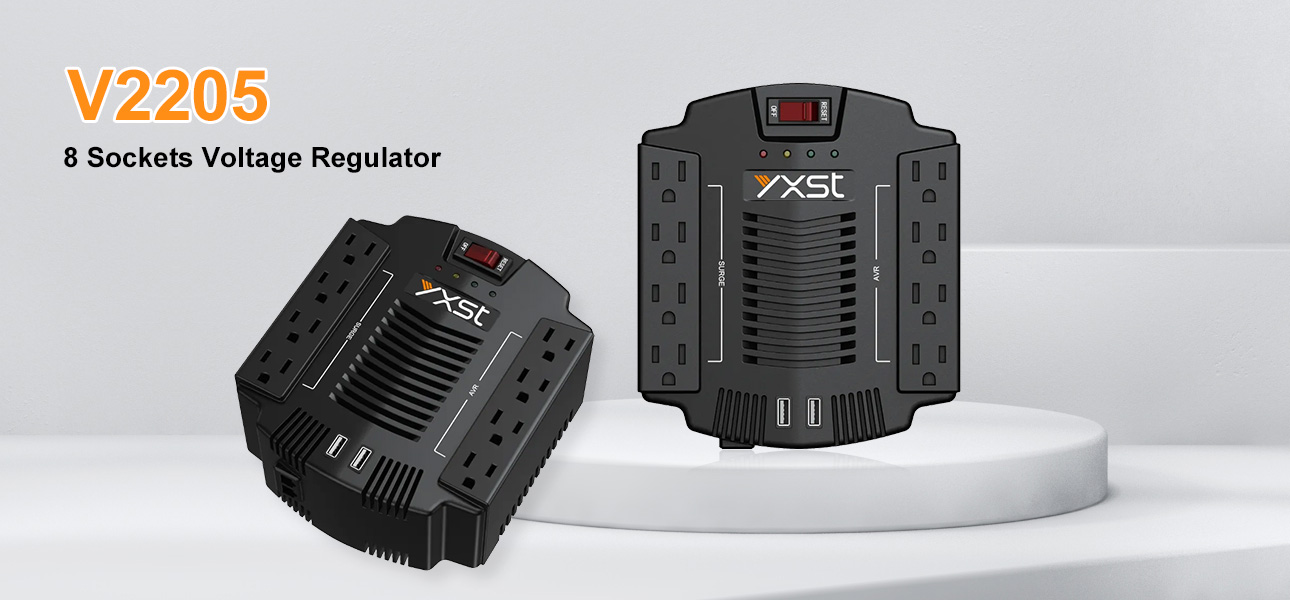I am Flying, and I will share with you the introduction of automatic voltage stabilizers, the use scenarios of automatic voltage stabilizers for household appliances, the power of voltage stabilizers, tips for purchasing household automatic voltage stabilizers, and AVR(Automatic Voltage Regulator) precautions. It is full of useful information. Don’t miss it. I suggest you collect it. If you miss it, you may not be able to find it again.

Introduction to automatic voltage stabilizers
An automatic voltage stabilizer is an electrical device that automatically adjusts the voltage in the power system to ensure the normal operation of equipment and electrical equipment. It can automatically adjust the output voltage to keep it within the set range when the grid voltage fluctuates or the load changes, thereby protecting the equipment from the impact of voltage fluctuations.

Application scenarios of automatic voltage stabilizers for household appliances
Automatic voltage stabilizers can be widely used in various places, such as homes and offices. Especially in areas with unstable power grids and large voltage fluctuations, they can effectively protect household appliances and extend their service life.
Power of voltage stabilizer selection
The power of the voltage stabilizer determines the current it can withstand. Therefore, when purchasing a voltage stabilizer, you need to clarify the power requirements of your equipment and choose a voltage stabilizer that meets the requirements. If the power is too large, it will cause unnecessary waste; if it is too small, the appliance will not work properly.

Tips for choosing a household automatic voltage stabilizer
(1) Load type and power requirements: First, you need to clarify the power and voltage requirements of the electrical equipment to which the automatic voltage regulator will be connected. Different load types (such as household appliances and office equipment) may require voltage stabilizers of different specifications and capacities. Generally speaking, a large-capacity voltage stabilizer can handle a larger load, but the actual use of the equipment must also be considered to determine the most appropriate capacity and power.
(2) Voltage stability and performance: The output voltage stability of the automatic voltage stabilizer is an important parameter, usually expressed in percentage or millivolts. The higher the output voltage stability, the better the voltage stabilizer’s performance and load protection. In addition, performance indicators such as the output waveform quality and conversion efficiency of the voltage stabilizer must also be considered.
(3) Input voltage range: Selecting an appropriate input voltage range ensures that the automatic voltage regulator can adapt to different voltage input environments and protect the equipment from input voltage instability. Usually, automatic voltage stabilizers have a certain input voltage range, such as 110V-240V, but the appropriate model needs to be selected according to the actual situation.
(4) Overload protection and fault protection: Ensure that the automatic voltage stabilizer has overload protection and fault protection functions so that the load equipment and the voltage stabilizer itself can be protected in time when the load suddenly increases or the equipment fails.
(5) Interface and convenience: Choose an automatic voltage stabilizer with an interface that is compatible with the load device and the power input interface to ensure that it can work effectively. In addition, choose a voltage stabilizer that is easy to use and convenient, such as an LCD or remote control function, to facilitate user monitoring and operation.
(6) Brand and after-sales service: Choose a fully automatic voltage stabilizer produced by a well-known brand and a reputable manufacturer to ensure the reliability of product quality and after-sales service. At the same time, consider the after-sales service and product warranty to ensure that the purchased product can be repaired and guaranteed promptly.
Precautions for AVR(Automatic Voltage Regulator)
(1) The power of household appliances cannot exceed the rated power of the automatic voltage stabilizer, otherwise it will cause damage to the automatic voltage stabilizer.
(2) During use, regular inspection and maintenance should be carried out to keep it working properly.
(3) The automatic voltage stabilizer should be placed in a well-ventilated, dry place without strong vibration, and avoid direct sunlight, rain, and moisture.
There are many factors to consider when purchasing a fully automatic voltage stabilizer, including load type and power requirements, voltage stability and performance, input voltage range, overload protection and fault protection, interface and convenience, and service. With the above guidance, I believe you can choose an automatic voltage stabilizer that suits your needs for your home and ensures the normal operation of your electrical equipment.




